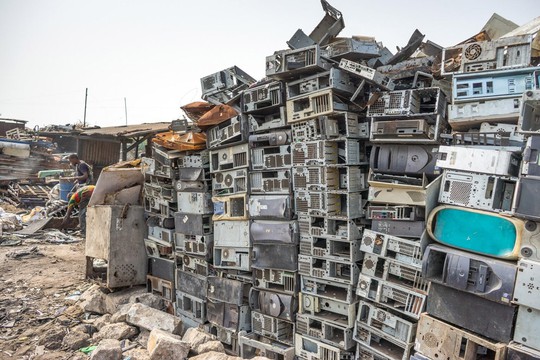UN reports e-waste could reach 82 million tonnes by 2030, an additional 33% rise from the 2022 increase to 2.6 million tonnes.
Earth faces a massive rise in e-waste, with a significant increase of 2.6 million tonnes yearly. This could reach 82 million tonnes by 2030, a further 33 percent increase from the 2022 figure, as per the statement. Dump full of old computers and gadgets.
The United Nations undertook a study to pinpoint the volume ofelectronic waste generated worldwide.
According to astatement by the United Nations Institute for Training and Research (UNITAR), 62 million tonnes of e-waste was produced in 2022, filling about 1.55 million tonnes of 40-tonne trucks.
The report noted that this occupies sufficient trucks to create a bumper-to-bumper line encircling the equator.
The waste is rapidly accelerating – five times faster than documented, disclosed the UN’s fourth Global E-waste Monitor (GEM) earlier today [March 20, 2024].
Nikhil Seth, executive director of UNITAR, stated: “Amid the hopeful embrace of solar panels and electronic equipment to combat the climate crisis and drive digital progress, the emergence in e-waste requires urgent attention.”
UN also documented that less than one quarter, making 22.3 percent of the year’s e-waste mass, was appropriately collected and recycled in 2022. This left US$ 62 billion worth of unrecovered natural resources, posing a pollution risk, especially if mishandled, as electronic devices often contain toxic substances.
Earth faces a massive rise in e-waste, with a significant increase of 2.6 million tonnes yearly. This could reach 82 million tonnes by 2030, a further 33 percent increase from the 2022 figure, as per the statement.
“From discarded televisions to dumped telephones, an enormous amount of e-waste is generated around the world,” stated Cosmas Luckyson Zavazava, Director of ITU Telecommunication Development Bureau.
“The latest research shows that the global challenge posed by e-waste is only going to grow. With less than half of the world implementing and enforcing approaches to manage the problem, this raises the alarm for sound regulations to increase collection and recycling.”
Upon thorough analysis, the report anticipates a reduction in the documented collected and recycled e-waste from 22.3 percent in 2022 to 20 percent by 2030.
The UN is urging companies worldwide to address challenges in the electronics market, from higher consumption to limited repair options, shorter product lifespan, and particularly inadequate e-waste management.
UN emphasized that if e-waste collection and recycling rates are brought to 60 percent by 2030, this would reduce human health risks. The benefits could outweigh the high cost of over $38 billion.
However, this depends on specific countries with rare Earth elements, which are essential for advancing future technologies such as renewable energy production and electric mobility.
“No more than one percent of demand for essential rare earth elements is met by e-waste recycling. Simply put: Business as usual can’t continue,” stated Kees Baldé, lead author of UNITAR.
read more in our Telegram-channel https://t.me/The_International_Affairs

 10:30 23.06.2024 •
10:30 23.06.2024 •























